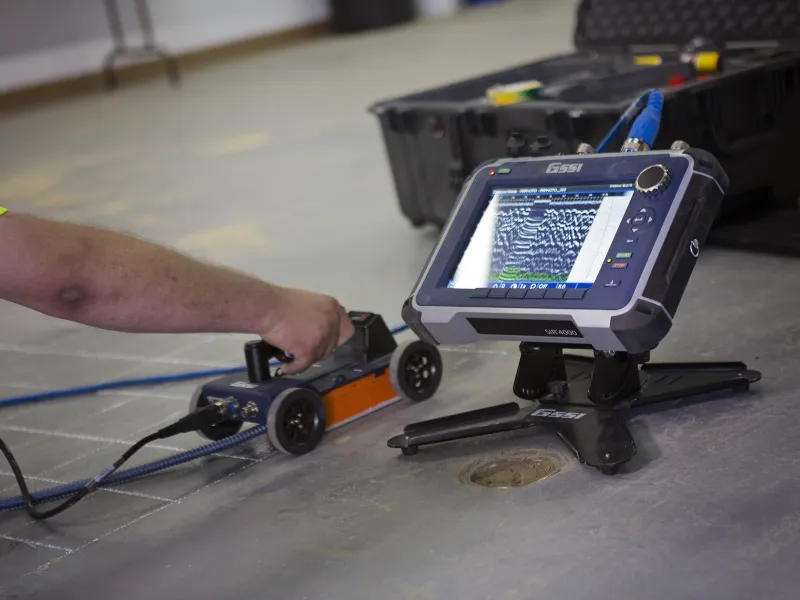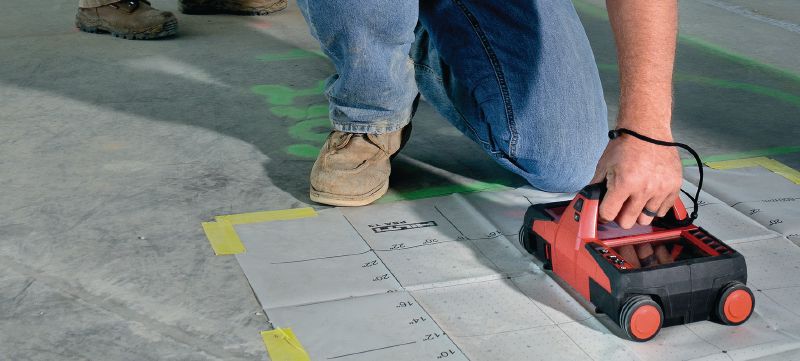Locate RainierGPR Service Areas Near You for Professional Concrete Scanning
Locate RainierGPR Service Areas Near You for Professional Concrete Scanning
Blog Article
Concrete Scanning: An Important Step Towards Making Sure Structural Stability and Safety
In the realm of construction and framework maintenance, the importance of concrete scanning can not be overstated. By employing sophisticated technology and methods, concrete scanning offers as an essential device in ensuring that the honesty and security of bridges and buildings are maintained to the greatest criteria.
Value of Concrete Scanning
Concrete scanning plays a critical function in ensuring the architectural honesty and security of buildings and facilities jobs. By using innovative technologies such as ground-penetrating radar (GPR) and electromagnetic induction, professionals can non-destructively examine concrete structures to find potential flaws, spaces, embedded items, and support design. This procedure makes it possible for very early detection of anomalies that might compromise the stability of a framework, protecting against costly damages and making sure the safety and security of residents.
Concrete scanning is particularly vital throughout the preparation and building stages of a project. Before exploration, cutting, or coring into concrete, scanning assists identify the specific places of rebar, post-tension cords, and other embedded elements, decreasing the danger of unexpected hits that might cause structural weaknesses. Furthermore, concrete scanning aids in quality assurance by confirming the density of concrete covers and spotting any kind of discrepancies that may influence the general sturdiness of the structure. Inevitably, buying concrete scanning solutions is not only a positive procedure to alleviate dangers yet also an essential action towards keeping the long-lasting safety and security of structures and framework.
Innovation for Concrete Evaluation

Benefits of Very Early Discovery
Prompt discovery of structural problems can substantially alleviate threats and ensure the durability of construction jobs. By determining possible troubles early in the building and construction process, stakeholders can take aggressive measures to attend to issues prior to they escalate into larger and much more pricey problems. Among the vital advantages of early discovery is the avoidance of structural failures, which can posture severe security hazards and lead to task hold-ups and economic losses.
In addition, very early discovery permits prompt fixings and upkeep, which can aid expand the lifespan of the structure. By addressing problems without delay, building teams can avoid costly repair important link services or perhaps the need for early replacement of architectural components. This proactive technique not only conserves time and money but likewise enhances the total safety and toughness of the building and construction job.
In addition, very early discovery can improve project preparation and decision-making by supplying stakeholders with useful insights into the condition of the structure. Armed with this info, job supervisors can make enlightened choices relating to building timelines, approaches, and materials, leading to much more effective and effective job results.
Ensuring Architectural Security
Making sure the architectural security of a construction job is critical to its safety and long life. Concrete scanning plays an important duty in ensuring architectural security by identifying possible issues such as gaps, delamination, or reinforcement rust that could compromise the integrity of the framework over time.
By making use of innovative scanning technologies like ground-penetrating radar (GPR) and electromagnetic induction, building specialists can non-invasively evaluate concrete frameworks to identify areas of worry below the surface. This positive strategy allows for the early detection of weak points or problems, allowing prompt repair work or support to stop architectural failures.
Normal concrete scanning during different construction stages and throughout the life cycle of a framework can help keep its stability, mitigate threats, and make certain the safety and security of owners. By focusing on architectural stability through concrete find out scanning, building and construction jobs can boost their resilience and sturdiness, inevitably contributing to higher safety and security and long life.
Preventing Vital Failures
Implementing regular evaluations, such as concrete scanning, can expose covert flaws like gaps, cracks, or corrosion that could compromise the integrity of a structure. By making use of innovative scanning modern technologies like Ground Penetrating Radar (GPR) or Concrete X-ray, designers can non-destructively examine the condition of concrete and determine weak points that require reinforcement or repair work.

Conclusion
In conclusion, concrete scanning plays an essential duty in guaranteeing structural integrity and safety by making use of innovative modern technology for very early detection of potential problems. This proactive method helps prevent important failings and guarantees the stability of frameworks. It is important to prioritize concrete examination as a basic practice to safeguard the long life and security of buildings and infrastructure.
Concrete scanning plays an important function in guaranteeing the structural integrity and safety of buildings and infrastructure tasks. Furthermore, concrete scanning aids in top quality control by verifying the thickness of concrete covers and detecting any disparities that might impact the overall sturdiness of the structure. Concrete scanning plays a crucial function in guaranteeing architectural stability by identifying prospective issues such as spaces, delamination, or support rust that could compromise the honesty of the framework over time.

In conclusion, concrete scanning plays a critical duty in ensuring structural integrity and safety by utilizing innovative modern technology for very early detection of potential issues.
Report this page